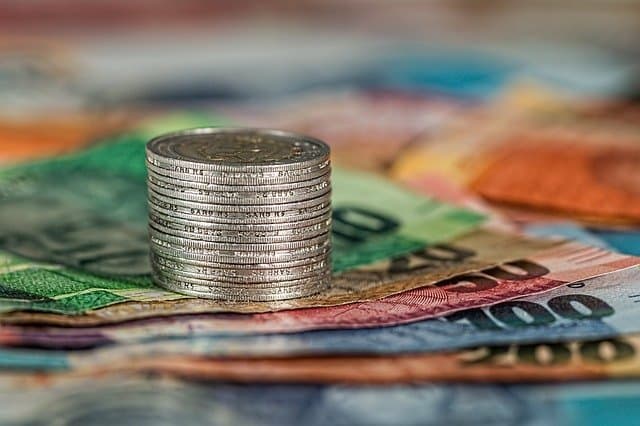Investing in stocks: how do you trade the stock markets?
Investing in stocks can be done anytime and anywhere! Many people are a bit hesitant when hearing the word stocks. The 2008 crisis caused a serious price crash after all. The situation was entirely different though before the turn of the millennium. Anyone who started investing with a €1000 starting capital in 1980 would now own a small fortune! But how can you actually invest in stocks yourself?
Get off to a flying start?
How to invest in stocks?
The number of people interested in investing in stocks has significantly increased recently. After the various crises, there is again plenty of room for growth. Besides, investing in stocks is more attractive than ever thanks to the availability of various online brokers. Online brokers are the ideal gateway to quickly profit from price falls and price increases.
Would you like to buy stocks for the long term? In that case, a reliable broker is the best place to be to open an account. Find below an overview of brokers at which stocks can be bought at favourable rates:
| Broker | Fees | Register |
|---|---|---|
 | Invest in stocks without commissions! Other costs applicable. | |
 | Speculate on price increases and decreases with a free demo! | |
 | Invest in stocks & ETF's against low fees. | |
 | Actively speculate in shares by using CFD's. 82% of retail CFD accounts lose money. | |
| Compare? | Compare the best brokers & open a free demo! |
What are stocks?
Before you start investing in stocks, it is important to understand what stocks exactly are. A stock represents an ownership share in a company. Major companies issue stocks to collect money. Anyone can then buy these stocks through the stock exchange. Upon buying a stock, you become co-owner of a share. Next, there are two ways to earn money with stocks. Click here if you want to know what stocks exactly are. Would you like to immediately browse to a particular chapter within the article? Please use the below buttons:
- How can you make money with stocks?
- Why should you invest in shares?
- What are the risks of investing in stocks?
- How is the price of a share determined?
- How to invest with a fund?
- Which strategy is best for your stock investments?
- What are the advantages and disadvantages of stocks?
- Check here our useful tips for your stock investments
How can you make money with stocks?
When you own stocks there are two ways to make money out of them. What are the best methods to make money with stocks?
Method 1: through a price increase
Most people are fully aware stock prices are continuously going up and down. You can earn money by selling your stocks with a profit. In this case, it is all about buying the stocks at the right moment. If you manage to buy stocks at a relatively low price, you can then sell them again at a higher price.
Method 2: through dividend
Some companies choose to share part of their profits with their shareholders. These profits are distributed by a company through a dividend. A dividend therefore makes it possible to earn an additional income with your stocks. Would you like to know more about dividend? Read this article.
Why should you invest in stocks?
Now that you understand how investing in stocks works you might wonder: why should I invest in stocks?
A big disadvantage of your savings is that the value decreases over time. You hardly receive any interest on your savings account. Meanwhile, inflation makes the regular price of products increase. Additionally, in some cases you also pay taxes on your savings. Investing can be a method to counter the reducing value of your savings.
Investing on the other hand is a profitable business in the long term. The average return on investment on the Dow Jones the past 25 years for example was about 7 percent. Therefore, investing in stocks seems a smart decision in the long term.

What are the risks of investing in stocks?
It’s probably clear by now you are generally making more money with stocks. However, stocks are not a risk-free investment. You can lose your entire investment by investing in shares. The stock prices can completely collapse making you lose a large part of your investment. Moreover, there is always a chance a company will go bankrupt. When this happens, you often lose your entire investment.
In short, investing in stocks is not completely risk-free! However, risks can be limited by spreading your investment. In this case, you invest in stocks of various regions and belonging to different companies. Besides, it is also important to only invest money which can be missed for a few years. That way you can also survive crises and you don’t have to sell your stocks at too low prices.
Find below all specific risks associated with stock investments:
- The risk to lose your entire investment.
- Market risk: the entire market can collapse during a crisis
- Volatility risk: markets can be very volatile with prices strongly moving up and down.
- Sector-specific risk: This means certain sectors can perform badly.
- Stock-specific risk: This means a certain stock performs badly.
- Timing risk: which means you buy a stock at the wrong moment.
- Currency risk: Making a loss from investing in or with foreign currencies.
How is the price of a stock determined?
Fundamentally, supply and demand determine the price of a stock. The stock price will increase when there is an increasing demand for a specific stock. On the contrary, the stock price will decrease when there is a decreasing demand for a specific stock. Successful investing in stocks, is therefore keeping a very close eye on the latest market developments.
Two analytical methods can be used to predict the price of a stock:
- Fundamental analysis: analyse the underlying numbers of companies
- Technical analysis: recognize patterns and properly respond to them
Investing in stocks with a fund
Would you like to periodically invest a certain amount, but do you have little time to carefully study and analyse stocks? In that case, investing your money in an investment fund might be your way to go. An investment fund is a fund which automatically invests your money in various stocks. A big benefit of a fund is the fact it is often possible to apply a good and extended spread of your investments.
Investment funds offer you the choice between more active and more passive funds. Active funds try to defeat the market and are, in general, more expensive. Passive funds follow an index and are, in general, cheaper. For most people the passive investment fund is the right choice.
Different stock investment strategies
There are different ways to invest in stocks. Below we discuss some possible strategies.
Capital growth
You can choose to buy stocks with the aim of growing your capital. In this case, you buy stocks hoping their value will increase in the future.
Building an income
Other investors aim to build an income with their stocks. You then buy stocks which regularly pay dividends.
Short selling
You can also choose to go short on stocks. In this particular case you earn money when the stock price decreases. This investment strategy is a more speculative one.
What are the advantages of investing in stocks?
High profits can be gained with stocks.
- An income can be built through dividends.
- Stocks are easy to buy and sell.
- You have an extended variety of stocks to choose from.
What are the disadvantages of investing in stocks?
- Investing in stocks requires a more active approach compared to the money on your savings account.
- A lot of money can be lost with individual stocks.
- The return on investment is not predictable.
Investing in stocks tips
By using these tips, you will achieve better results with your investments in stocks. Before buying a stock, it is a good idea to first analyse and research the company. First check the overall economic situation: is the economy growing or declining? After this, you can research the performance of the company over the past years. Also consider the vision statements of the company and make sure they align with your ideas and expectations.
Additionally, practice is the key to success. Don’t immediately jump in at the deep end. Smart investors start with a small investment to verify if they are investing in stocks in the proper way. On this page we have listed various parties which can be used to try investing for free and without risks using a demo.
Would you like to receive more tips about investing in stocks? Read the article stocks for dummies!

Long-term strategy
When you have chosen to invest in the long term, don’t expect a high return in the short term. There are still stocks which will significantly increase, but across the board stock prices are also regularly decreasing. Therefore, it might be a good idea to buy stocks for a fixed amount every month. You could buy $100 or $1000 worth of stocks every month. This way you will spread your investments, and you will avoid betting all your money on the top of the price wave.
Thanks to the introduction of CFD brokers, consumers can finally benefit from rising and falling prices. CFD brokers namely allow you to go short, so you earn money when the price falls. Especially for daytraders, people which actively invest on a daily basis, this volatility can make it possible to achieve a high return.
Category investing in stocks: read more
In the category investing in stocks we discuss everything which is related to investing in stocks. Think amongst other things about selecting your stocks, specific stocks which we will discuss and the discussion of the different available investment methods.
Upon the different crises there is room for growth again. Moreover, investing in stocks is more attractive than ever thanks to the introduction of different online brokers. Online brokers allow you to quickly benefit from rising and falling prices.
